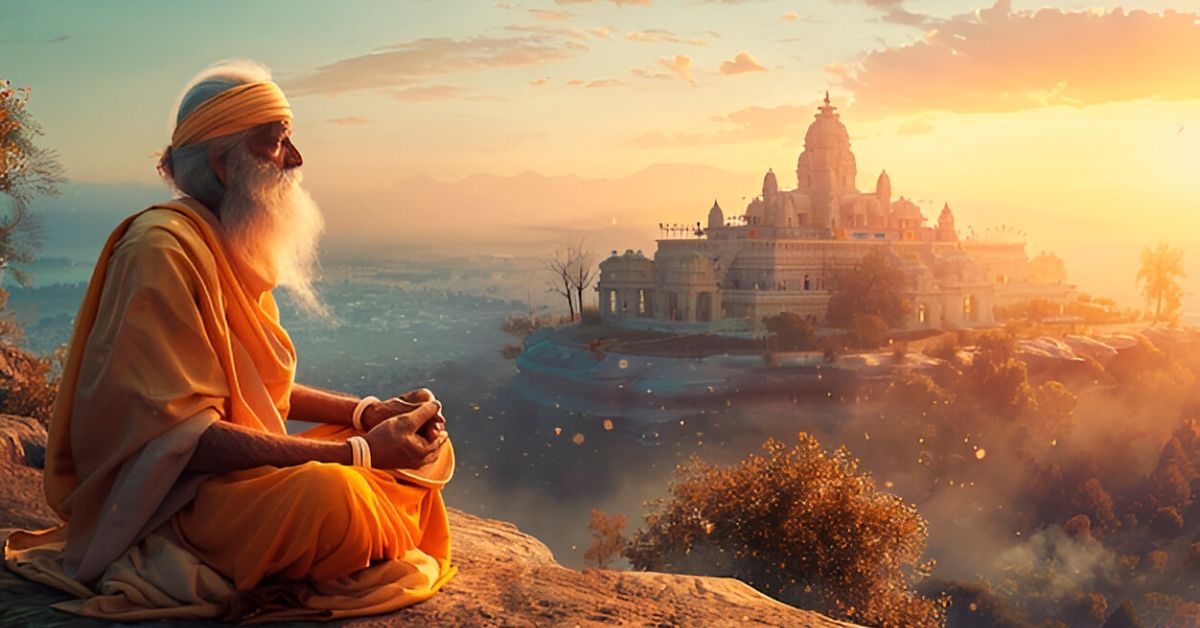Lifestyle
Journey Through the Sacred Path of Buddhism in India and Beyond

For spiritual seekers, history enthusiasts, and travelers yearning for inner peace, following the footsteps of the Buddha offers a profound experience. Across serene landscapes, ancient monasteries, and sacred stupas, the Buddhist circuit connects some of the most important sites in the religion’s history. This sacred journey not only reveals the life and teachings of Siddhartha Gautama—the Buddha—but also brings you face-to-face with timeless wisdom and tranquility.
Spanning across India, Nepal, Bhutan, and Sri Lanka, the Buddhist trail draws visitors from around the world who are eager to explore the roots of one of the world’s oldest spiritual philosophies.
The Spiritual Significance of the Buddhist Circuit
Buddhism traces its origins to India, and many of its most revered pilgrimage sites are located within the country. These places represent key milestones in Buddha’s life—his birth, enlightenment, first sermon, and final liberation.
Destinations such as Lumbini, Bodh Gaya, Sarnath, and Kushinagar are at the heart of many Buddhist tour packages. These sites hold deep spiritual significance and are often visited by monks, devotees, and travelers on personal or meditative retreats.
By opting for specialized Buddhist tour packages, visitors gain deeper access to not only the historical narrative but also the spiritual ambiance that each site offers.
Bodh Gaya – The Land of Enlightenment
Bodh Gaya, located in Bihar, India, is the most sacred Buddhist pilgrimage site. It is here under the Bodhi Tree that Prince Siddhartha attained enlightenment and became the Buddha. The Mahabodhi Temple, a UNESCO World Heritage Site, stands as a symbol of this transformation.
Pilgrims from around the globe come here to meditate beneath the Bodhi Tree, walk the sacred path around the temple, and absorb the serene atmosphere. Buddhist tour packages often begin with Bodh Gaya, as it represents the awakening that lies at the heart of Buddhist philosophy.
Besides the temple, the area is dotted with monasteries built by Buddhist communities from Thailand, Japan, Bhutan, Sri Lanka, and others, each showcasing unique architecture and cultural flavors.
Sarnath – The First Sermon
After attaining enlightenment, the Buddha traveled to Sarnath, near Varanasi, to deliver his first sermon at Deer Park. This event marked the beginning of the Dharma, or the spreading of his teachings.
The Dhamek Stupa, a towering cylindrical structure, marks the site of this sermon. Visitors can also explore the Sarnath Archaeological Museum, which houses the famous Ashokan Lion Capital, now India’s national emblem.
Spiritual travelers appreciate Sarnath for its peaceful gardens and the opportunity to reflect on the message of the Middle Way. Most Buddhist tour packages include guided visits to the stupa and museum, along with meditation sessions and visits to nearby monasteries.
Kushinagar – The Final Nirvana
Kushinagar, another important stop in the journey, is the place where the Buddha attained Mahaparinirvana, or final liberation from the cycle of rebirth. The Mahaparinirvana Temple, with its reclining Buddha statue, is a deeply moving site that symbolizes peace, detachment, and transcendence.
Pilgrims often light lamps, chant prayers, or simply sit in silent reflection. The surrounding stupas and ruins add historical depth to the visit. Buddhist tour packages often design Kushinagar as the final stop, bringing the spiritual journey full circle.
Lumbini – The Birthplace of the Buddha
Located in Nepal, just across the Indian border, Lumbini is recognized as the birthplace of Siddhartha Gautama. The Maya Devi Temple, dedicated to his mother, marks the exact spot of birth and is surrounded by peaceful gardens, ancient ruins, and sacred ponds.
Lumbini has been developed into an international pilgrimage center with monasteries built by Buddhist nations around the world. The atmosphere is serene and meditative—ideal for couples, solo travelers, and groups looking for spiritual enrichment.
Many Buddhist tour packages offer extended itineraries that include cross-border travel from India to Nepal, ensuring a comprehensive experience of all major Buddhist landmarks.
Nalanda and Rajgir – Hubs of Ancient Wisdom
Apart from the four major pilgrimage sites, Nalanda and Rajgir in Bihar are essential additions to the Buddhist trail. Nalanda was one of the world’s first residential universities and a key center for Buddhist studies, attracting scholars from across Asia.
Rajgir, meanwhile, was a favorite retreat of the Buddha. It is home to Vulture’s Peak, where the Buddha delivered several sermons, and the Griddhakuta Hill, offering breathtaking views and a chance to meditate in nature.
Several Buddhist tour packages include these destinations, allowing travelers to connect with the intellectual and monastic legacy of ancient Buddhism.
Experiencing the Culture and Daily Life
One of the unique aspects of a Buddhist pilgrimage is the opportunity to observe and sometimes participate in the daily rituals of monks and devotees. From early morning chanting and alms-giving ceremonies to community meals and prayer flag offerings, every moment is steeped in mindfulness.
Some Buddhist tour packages include stays at monasteries or meditation retreats, where travelers can learn about Vipassana meditation, Buddhist philosophy, and monastic life. This immersive approach allows not just sightseeing, but soul-searching and spiritual growth.
Destinations Beyond India
While India is the heartland of Buddhism, several surrounding countries offer enriching experiences for those on an extended spiritual journey. In Bhutan, you can hike to Tiger’s Nest Monastery, one of the most iconic and remote Buddhist temples. In Sri Lanka, visit the Temple of the Tooth Relic in Kandy or explore ancient cave temples in Dambulla.
Thailand, Myanmar, and Japan also offer cultural immersion, with distinct forms of Buddhism practiced in vibrant temples and sacred spaces. Some Buddhist tour packages offer international itineraries that include multiple countries, showcasing how the Buddha’s teachings have traveled and transformed over time.
When to Travel and How to Prepare
The best time to embark on a Buddhist pilgrimage is between October and March, when the weather in India and Nepal is cooler and more conducive for travel. Monasteries and pilgrimage sites are especially active during Buddha Purnima, the celebration of Buddha’s birth, enlightenment, and death—all of which occurred on the same day, according to tradition.
Travelers are advised to dress modestly, respect local customs, and embrace silence where appropriate. It’s also recommended to bring a travel journal, as many pilgrims find themselves deeply moved by the journey and wish to reflect on their experiences.
Professionally curated Buddhist tour packages simplify logistics such as transportation, accommodation, permits (especially for Nepal), and guided tours. This lets travelers focus on the deeper purpose of their journey—spiritual exploration and self-discovery.
Final Thoughts
A Buddhist pilgrimage is more than just a tour; it is a path inward. As you walk in the footsteps of the Buddha, from the sacred Bodhi Tree to the peaceful monasteries of Lumbini and the ancient ruins of Nalanda, you encounter not just the story of a man, but a timeless message of compassion, awareness, and inner peace.
Thoughtfully designed Buddhist tour packages allow you to immerse yourself in this sacred legacy while making your journey seamless, reflective, and truly transformative.
